The first thing you notice at IBC is the wide range of tech present – there’s a bunch of equipment manufacturers, broadcasting, streaming and software solutions at the show. At fxguide we are perhaps most interested in what was going on from the camera manufacturers and from a few of the key software providers, but even at a glance, IBC seems more focused on production and broadcast than graphics or effects.
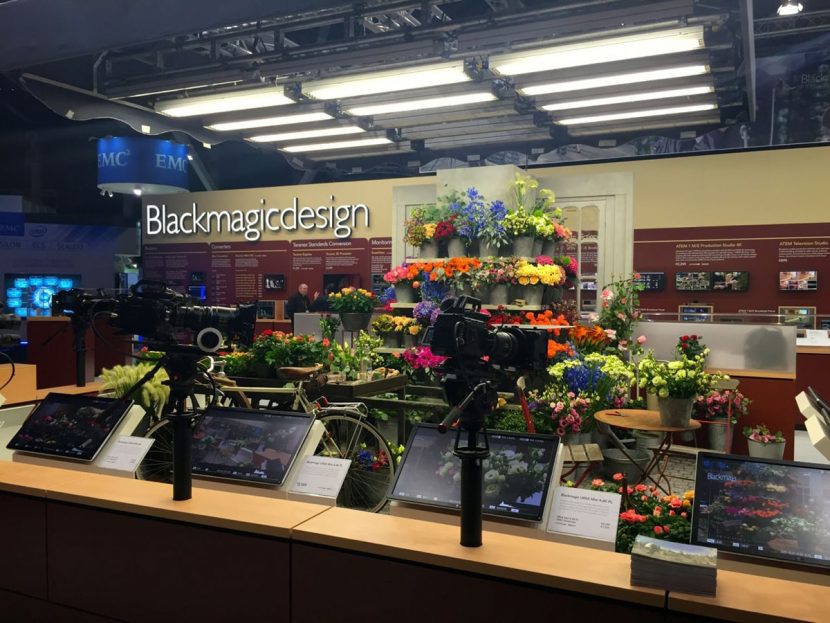
Blackmagic Design probably had one of the largest areas on the show floor, showing off DaVinci Resolve 12 and a number of their URSA cameras. But the most overrun booths were definitely ARRI and the GoPro areas – it was difficult to find space around their zones at times, a tribute to the positioning those companies have been able to hold in their respective markets.
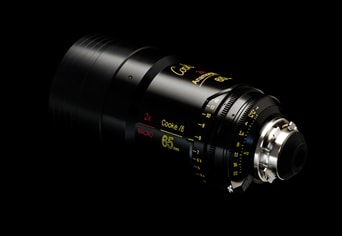 One of the reasons why IBC remains popular is the focus on hands on nature of the trade show, while one might be able to review a piece of software online or even download a trailer, when it comes to say checking out the amazing lenses on the Cooke booth, one really needs to see the actual lens. You need to play with the it and get a feeling for the actual new production unit 65mm Macro Anamorphic/i 2x Prime lens ! (Which btw is beautiful – it has a close focus of 5.5” from the front of the lens, which is unheard of in an anamorphic lens).
One of the reasons why IBC remains popular is the focus on hands on nature of the trade show, while one might be able to review a piece of software online or even download a trailer, when it comes to say checking out the amazing lenses on the Cooke booth, one really needs to see the actual lens. You need to play with the it and get a feeling for the actual new production unit 65mm Macro Anamorphic/i 2x Prime lens ! (Which btw is beautiful – it has a close focus of 5.5” from the front of the lens, which is unheard of in an anamorphic lens).
Speaking of Cooke, the company has also been working on enhancements to its /i Squared Technology metadata system to provide even more detailed lens data to VFX and post-production artists. The latest addition to the /i Squared firmware provides distortion mapping – not just a theoretical measurement of all lenses of a particular focal length, but of the specific lens in use, measured and calculated at the factory. This new function will provide VFX teams with much more accurate data to help them in the post process. The new function will be available in lenses shipping from Q4, and older lenses with /i sensors can be upgraded with the new firmware for a modest cost to be confirmed.
Imagine getting a shot and not needing to have someone shoot a test chart to approximate the lens distortion but just being able to immediately read it from the Metadata instead! And not some generic distortion – the actual lens distortion for that serial numbered lens…at each point on the lens!!! Plus this is automatic on set, it costs nothing – it is a tiny amount of data compared to a 4K frame (it is not encoded as a frame in the metadata so the data is tiny).
Fixing post: Metadata striping.
There is a problem – and it is not from Cooke: too many artists are not seeing the metadata at their desks. At Siggraph 2015, fxguide started a campaign to try and find out why this is? Some companies such as those controlling their own shoots in the area of advertising or promos are passing the full files to the artists, but many VFX films convert the on set footage to DPX and strip out the metadata or they convert them in programs like Nuke to OpenEXR and leave the output set to “Default Meta Data”.
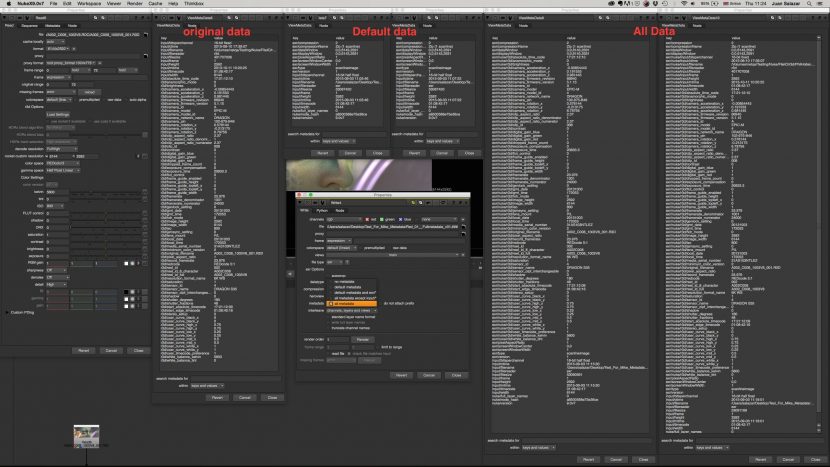
The problem is that Default Metadata is not ALL the metadata. Before you ask ‘why the heck doesn’t the Foundry just change the default(?)’, we asked that exact question ourselves. The reason is that the Foundry is under pressure from existing pipelines.
“So, originally the default metadata is based of the original metadata fields that we used to have. Clearly that has changed but we can’t set it up as a new default, as that could affect compatibility with older scripts of nuke, something that post houses ask us to keep. Nonetheless in Nuke you can set node defaults so anyone can set their Nuke write node to default to all metadata,” explained the Foundry’s Juan Salazar. Of course, the Foundry are as keen as anyone to have more metadata, as their own tools could use it and thus it would benefit all users.
This is not only an issue for Cooke, who want to promote better metadata from the lens, but also new pipeline tools such as the Academy’s ACES pipeline, again discussed in a BOF at Siggraph 2015 in LA. While the Academy is doing outstanding work with their ACES and ACEScg pipelines – the whole system falls in a heap if pipelines strip out metadata before they get to the artists who need them, and as we reported some time ago the Academy’s own Sci-tech members are stunned at how rarely metadata is actually available to an artist on a modern vfx major film.
We will be doing more on this in coming weeks and months, but if you have experiences with metadata good or bad – we’d love to hear about them. Fixing this would cost the industry nothing – in fact not having to shoot say distortion charts would SAVE everyone money, we just need to move the needle on this so the lowly paid dubs guy doing the transcoding does not accidentally remove most or all the valuable metadata that can now be easily recorded on set.
VR
As one might expect there was a lot of new VR companies at IBC this year.
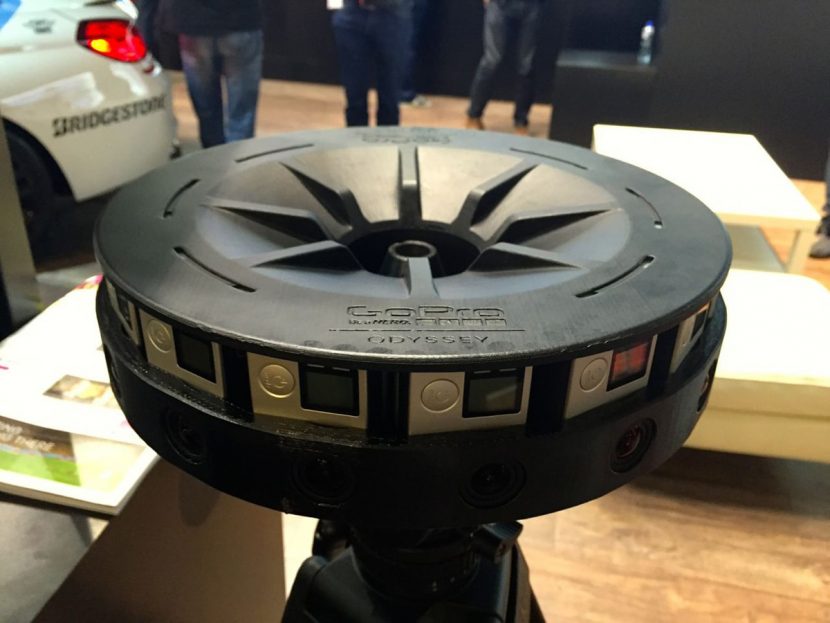
A small section of the conference was also devoted to ‘Future’ tech, and that included VR from Jaunt, Nozon, Sphericam and OTOY, as well as 8K displays from NHK in Japan and even some Disney Research Zurich research into HDR video. The other popular booths were clearly those involving drones – luckily most of the flying machines remained behind special wires.
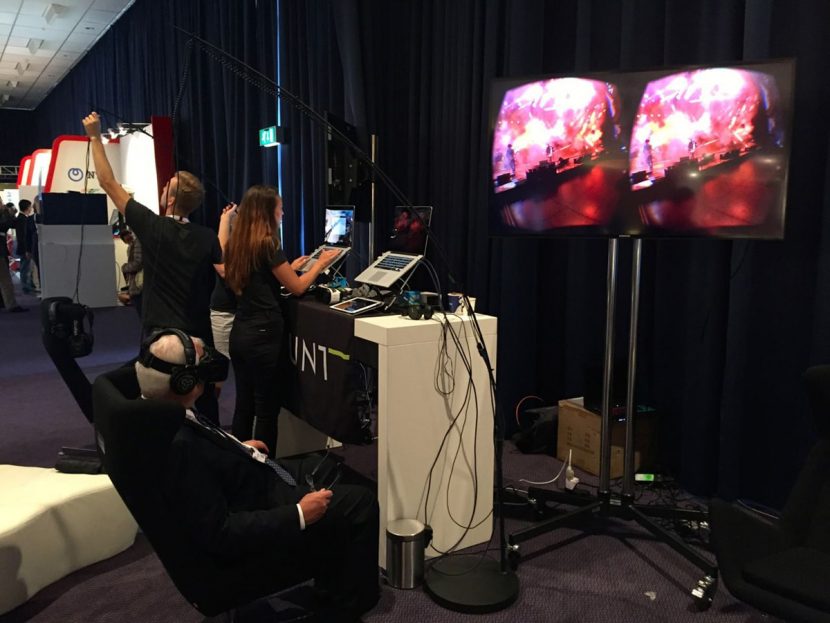
Our time at IBC also included catching up with friends of fxguide and fxphd, including Jason Diamond on the Frame.io booth who were demo’ing their Final Cut Pro X integration, and a session with ARRI where a range of filmmakers – from the visual effects supervisor of Ant-Man, to the cinematographer on Downton Abbey – recounted their stories using the ALEXA and ARRI lenses and lighting kits on the UK epic period drama.
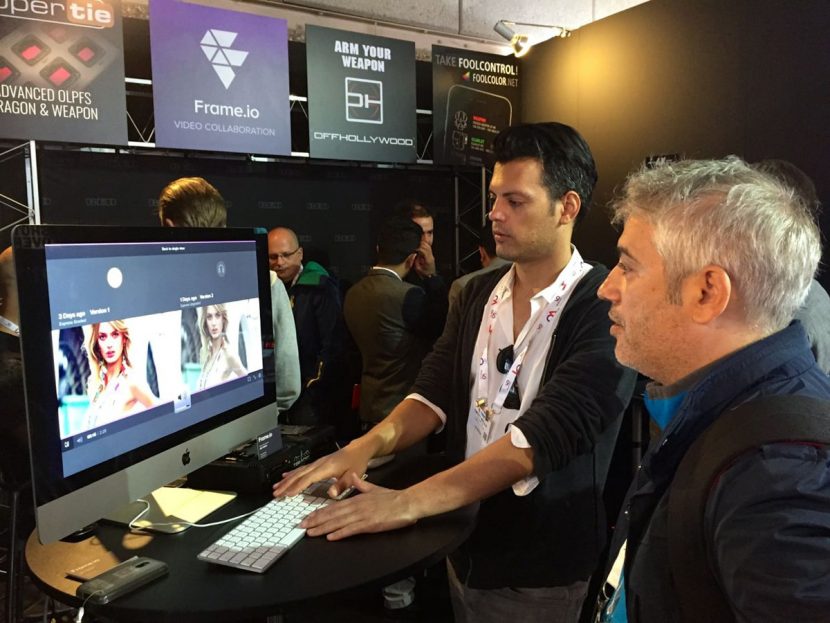
There’s a great atmosphere around the city and at the conference, too, even though it is very much a sales event. Amsterdam is a hive of activity of course during IBC – someone commented that 100 per cent of the city’s hotel beds were occupied during the week of the conference, and it definitely felt like it as one could not stop in a cafe or restaurant without overhearing industry jargon – between glasses clinking and beer’s being opened!

Hello
Was suppost to post this a while ago but personal stuffs came in between.
Yes, metadata is the biggest issue we face today. Look at something like Nuke Studio that totally lacks management of metadata. There’s no easy way to inject custom metadata with for instance a soft effect metadata node.You have no way to get metadata like described in this article like LDS metadata in Arri Alexa files to come through into your exports. And even if you had some custom metadata in your DPX’es and you read them into Nuke they’re stripped out.
Not to mention how much in a pipe that would be so much more easier to manage if we easily could inject and manage custom metadata.
THere’s a few metadata related tickets logged at TF that I know of that’s worth voting on:
7114 We don’t have access to all metadata in for example DPX files
28191 Feature – Python API – writable Metadata key/value pairs on Clips/TrackItems)
48837 [Feature]: Metadata. Add ability to access metadata from another track
47134 ModifyMetaData breaks concatenation, fixed???